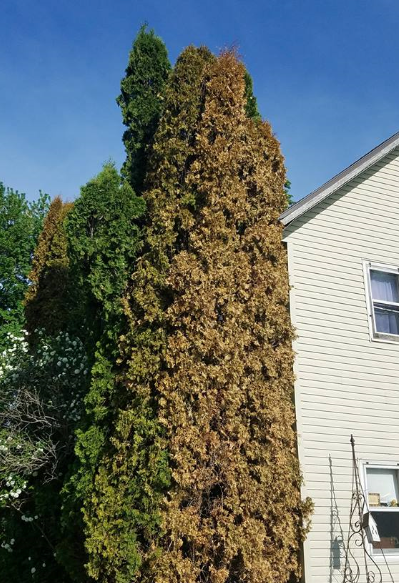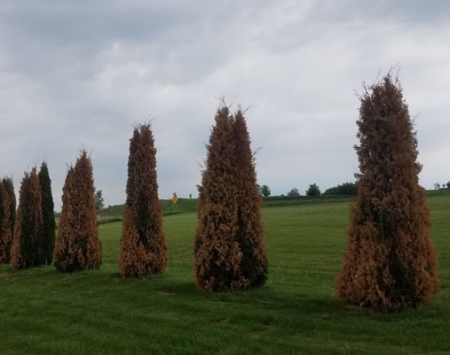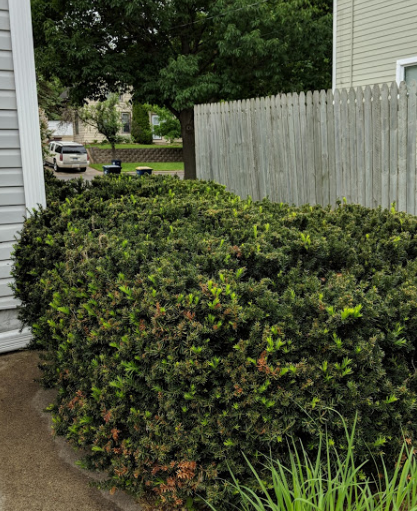Click below to listen to my 2 min. Garden Bite radio show: Winter burn on Evergreens
Audio PlayerThe long cold winter of 2018, especially the late season cold, did not do our evergreens any favors. My friends over at Sargent’s Nursery in Red Wing shared information on “winterburn”.

The brown/burnt foliage is almost always on one side of the plant and is usually south or west facing.
Evergreens go dormant in November, storing moisture reserves in the buds, stems, and needles to survive the long winter. The dark green needles are exposed all winter to the sun on the south/west side of the plant radiating heat onto the foliage of the plant (made even worse if it reflects off the snow or white siding of buildings).

The plant then “respires” or sweats out the moisture just as it would on a warm spring or summer day. This happens over and over, day after day and eventually, the plant runs out of moisture in reserve and then the tips of the plants freeze or “burn” due to moisture loss during cold temperatures.
Because this winter (2018) was literally 3-4 weeks longer and much colder late into April it was a perfect storm of conditions for “winterburn” to occur.

Sargent’s said they’ve seen it all over on multiple different types of evergreen species including Arborvitae, Spruce, Pine, Yew, Juniper, and Boxwood.
There IS good news: winterburn doesn’t have to be fatal if it only burns the tips.

Here’s the unfortunate caveat: IF it kills the buds, the plant will never recover as there are no growing points (buds). If the buds survive, they can push new growth through and once the new needles open up they can mask the brown needles, which will fall off as the season progresses.
Here’s more information on winter burn from the University of Wisconsin including how to avoid it.
The University of MN Extension says: If leaves are dead but buds and stem tissue near dead foliage are still alive, new plant foliage will regrow to replace winter burned foliage. On the other hand, if buds and stem tips were damaged, branches should be pruned back to ¼” above a bud in the live portion of the plant. In severe cases the entire plant may have died and plant removal and replacement will be necessary. Click HERE for more information.
